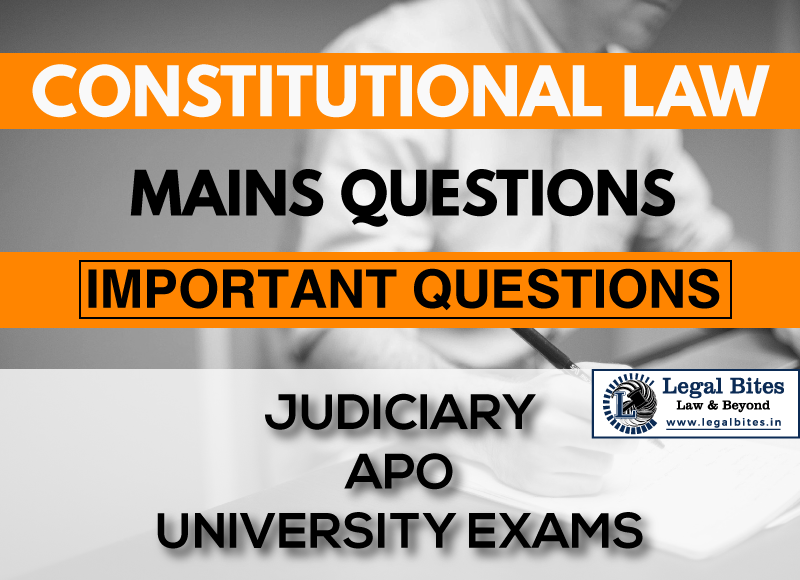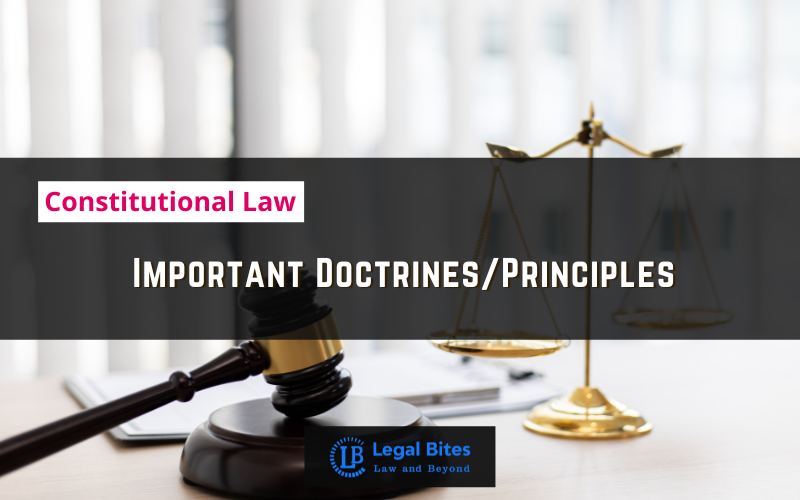Write a short note on Colourable legislation.
Question: Write a short note on Colourable legislation. [MPJS. 2018] Find the answer to the mains question only on Legal Bites. [Write a short note on Colourable legislation.] Answer The doctrine of Colourable Legislation is based on the principle that “what cannot be done directly cannot be done indirectly”. In other words, if the constitution does not permit… Read More »
;
Question: Write a short note on Colourable legislation. [MPJS. 2018] Find the answer to the mains question only on Legal Bites. [Write a short note on Colourable legislation.] Answer The doctrine of Colourable Legislation is based on the principle that “what cannot be done directly cannot be done indirectly”. In other words, if the constitution does not permit the certain provision of legislation, any provision that has the same effect but in a roundabout manner is...
Question: Write a short note on Colourable legislation. [MPJS. 2018]
Find the answer to the mains question only on Legal Bites. [Write a short note on Colourable legislation.]
Answer
The doctrine of Colourable Legislation is based on the principle that “what cannot be done directly cannot be done indirectly”. In other words, if the constitution does not permit the certain provision of legislation, any provision that has the same effect but in a roundabout manner is also unconstitutional. This doctrine is found on the wider doctrine of “fraud on the constitution”. A thing is Colourable when it seems to be one thing in the appearance but another thing underneath.
The Supreme Court of India in different judicial pronouncements has laid down certain tests in order to determine the true nature of the legislation impeached as colourable:
- The court must look to the substance of the impugned law, as distinguished from its form or the label which the legislature has given it. For the purpose of determining the substance of an enactment, the court will examine two things, i.e. a) effect of the legislature and the b) object and the purpose of the act.
- The doctrine of colourable legislation has nothing to do with the motive of the legislation; it is in the essence a question of vires or power of the legislature to enact the law in question.
The doctrine does not involve any question of bonafide or malafides intention on the part of the legislature. If the legislature is competent enough to enact a particular law, then whatever motive which impelled it to act is irrelevant. On the other hand, it was observed by the Apex court that “the motive of the legislature in passing a statute is beyond the scrutiny of the courts” so the court has no power to scrutinize the policy which led to an enactment of a law falling within the ambit of the legislature concerned.
A contrasting case is of KT Moopil Nair v. State of Kerala, AIR 1961 552. In this case, the state imposed a tax under Travancore Cochin Land Tax Act, 1955, which was so high that it was many times the annual income that the person was earning from the land. The SC held the act as violative of Articles 14 and 19(1) (f) in view of the fact that in the disguise of tax a person’s property was being confiscated.
KC Gajapati Narayan Deo v. State of Orissa, AIR 1953 is a famous case that illustrates the applicability of this doctrine. In this case, SC observed that the constitution has clearly distributed the legislative powers to various bodies, which have to act within their respective spheres. These limitations are marked by specific legislative entries or in some cases, these limitations are imposed in the form of fundamental rights of the constitution.
Important Mains Questions Series for Judiciary, APO & University Exams
- Constitutional Law Mains Questions Series Part-I
- Constitutional Law Mains Questions Series Part-I
- Constitutional Law Mains Questions Series Part-II
- Constitutional Law Mains Questions Series Part-IV
- Constitutional Law Mains Questions Series Part-V
- Constitutional Law Mains Questions Series Part-VI
- Constitutional Law Mains Questions Series Part-VII
- Constitutional Law Mains Questions Series Part-VIII
- Constitutional Law Mains Questions Series Part-IX
- Constitutional Law Mains Questions Series Part-X



